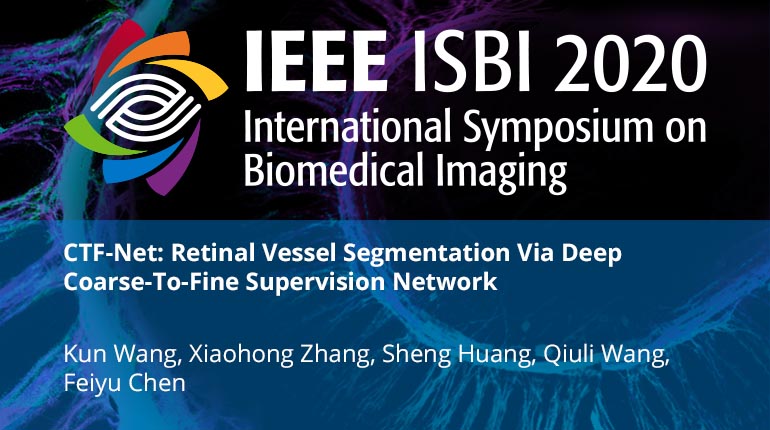
Already purchased this program?
Login to View
This video program is a part of the Premium package:
CTF-Net: Retinal Vessel Segmentation Via Deep Coarse-To-Fine Supervision Network
- IEEE MemberUS $11.00
- Society MemberUS $0.00
- IEEE Student MemberUS $11.00
- Non-IEEE MemberUS $15.00
CTF-Net: Retinal Vessel Segmentation Via Deep Coarse-To-Fine Supervision Network
Retinal blood vessel structure plays an important role in the early diagnosis of diabetic retinopathy, which is a cause of blindness globally. However, the precise segmentation of retinal vessels is often extremely challenging due to the low contrast and noise of the capillaries. In this paper, we propose a novel model of deep coarse-to-fine supervision network (CTF-Net) to solve this problem. This model consists of two U-shaped architecture(coarse and fine segNet). The coarse segNet, which learns to predict probability retina map from input patchs, while the fine segNet refines the predicted map. To gain more paths to preserve the multi-scale and rich deep features information, we design an end-to-end training network instead of multi-stage learning framework to segment the retina vessel from coarse to fine. Furthermore, in order to improve feature representation and reduce the number of parameters of model, we introduce a novel feature augmentation module (FAM-residual block). Experiment results confirm that our method achieves the state-of-the-art performances on the popular datasets DRIVE, CHASE_DB1 and STARE.
Retinal blood vessel structure plays an important role in the early diagnosis of diabetic retinopathy, which is a cause of blindness globally. However, the precise segmentation of retinal vessels is often extremely challenging due to the low contrast and noise of the capillaries. In this paper, we propose a novel model of deep coarse-to-fine supervision network (CTF-Net) to solve this problem. This model consists of two U-shaped architecture(coarse and fine segNet). The coarse segNet, which learns to predict probability retina map from input patchs, while the fine segNet refines the predicted map. To gain more paths to preserve the multi-scale and rich deep features information, we design an end-to-end training network instead of multi-stage learning framework to segment the retina vessel from coarse to fine. Furthermore, in order to improve feature representation and reduce the number of parameters of model, we introduce a novel feature augmentation module (FAM-residual block). Experiment results confirm that our method achieves the state-of-the-art performances on the popular datasets DRIVE, CHASE_DB1 and STARE.
 Cart
Cart Create Account
Create Account Sign In
Sign In





